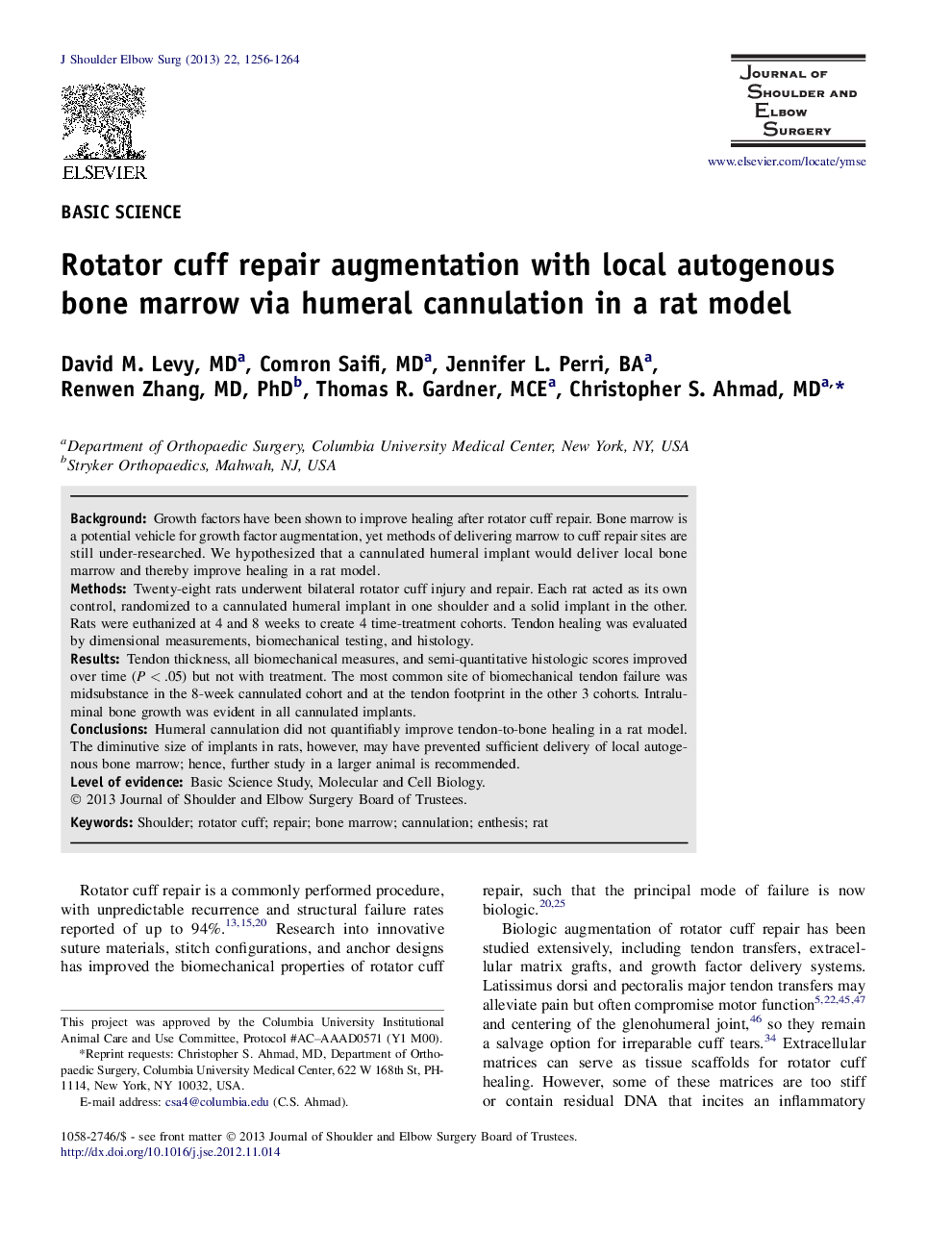| Article ID | Journal | Published Year | Pages | File Type |
|---|---|---|---|---|
| 4073609 | Journal of Shoulder and Elbow Surgery | 2013 | 9 Pages |
BackgroundGrowth factors have been shown to improve healing after rotator cuff repair. Bone marrow is a potential vehicle for growth factor augmentation, yet methods of delivering marrow to cuff repair sites are still under-researched. We hypothesized that a cannulated humeral implant would deliver local bone marrow and thereby improve healing in a rat model.MethodsTwenty-eight rats underwent bilateral rotator cuff injury and repair. Each rat acted as its own control, randomized to a cannulated humeral implant in one shoulder and a solid implant in the other. Rats were euthanized at 4 and 8 weeks to create 4 time-treatment cohorts. Tendon healing was evaluated by dimensional measurements, biomechanical testing, and histology.ResultsTendon thickness, all biomechanical measures, and semi-quantitative histologic scores improved over time (P < .05) but not with treatment. The most common site of biomechanical tendon failure was midsubstance in the 8-week cannulated cohort and at the tendon footprint in the other 3 cohorts. Intraluminal bone growth was evident in all cannulated implants.ConclusionsHumeral cannulation did not quantifiably improve tendon-to-bone healing in a rat model. The diminutive size of implants in rats, however, may have prevented sufficient delivery of local autogenous bone marrow; hence, further study in a larger animal is recommended.
